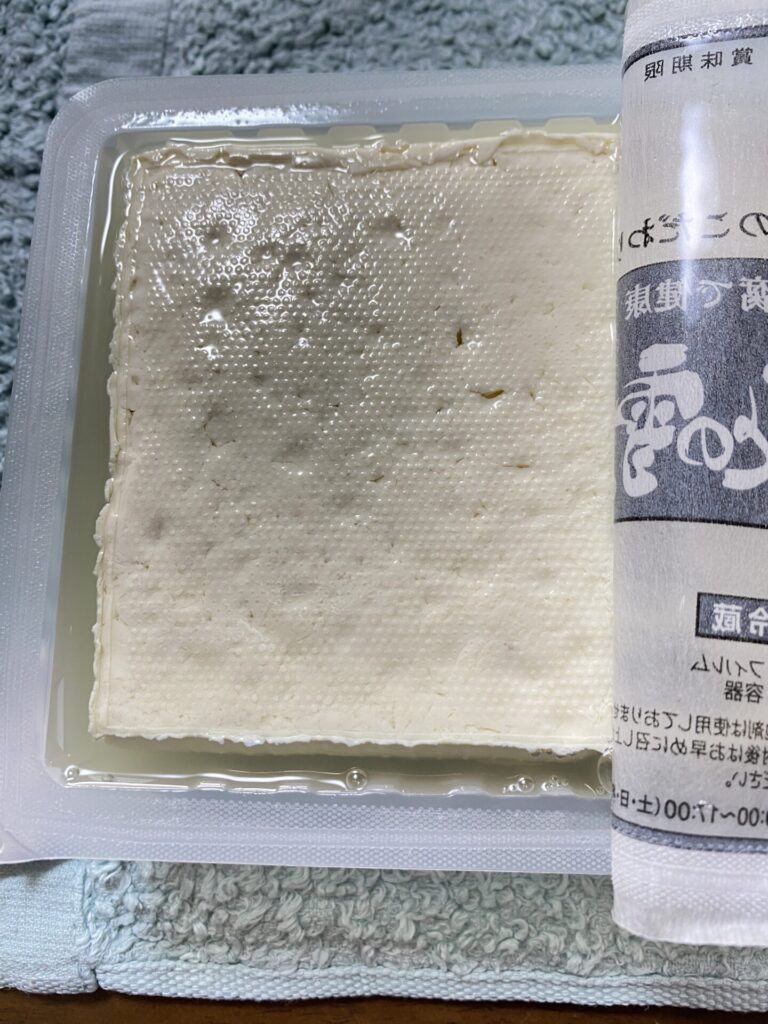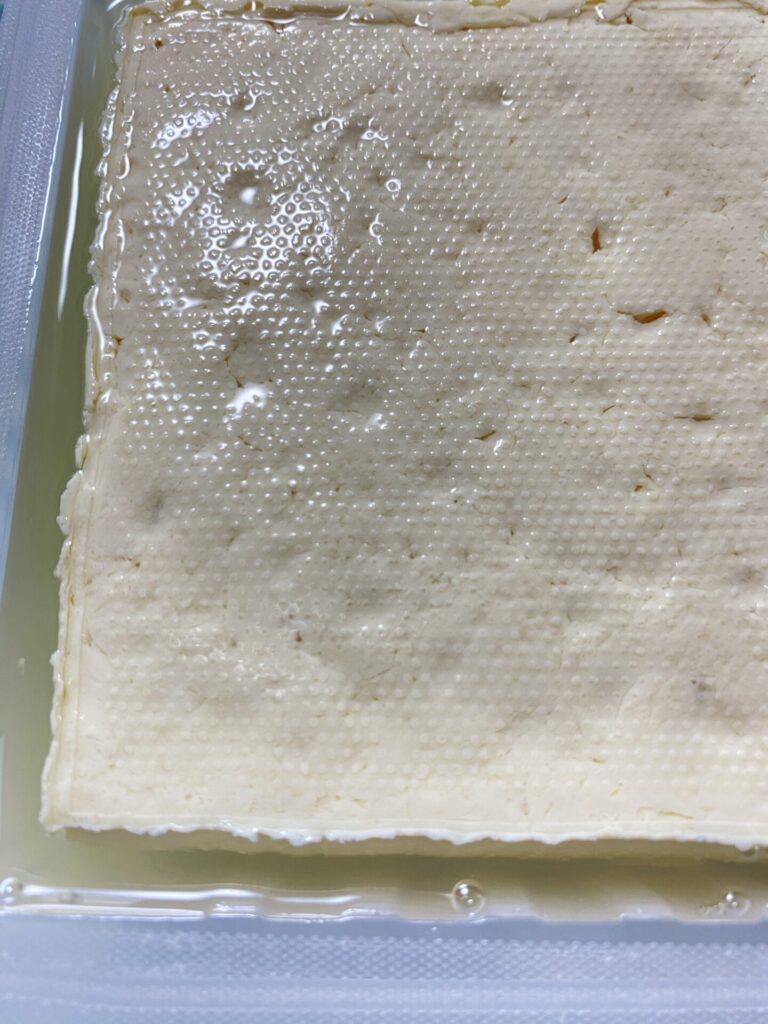Differences between MOMEN( cotton) TOFU and KINUGOSHI(silken) TOHU.
Introduction.
Tofu is an essential ingredient in Japanese cuisine. Did you know that there are two main types of tofu: momen( cotton ) tofu and kinugoshi( silken ) tofu? Japanese people use these differently depending on the dish they are cooking or on their preferences. What are the differences between these two types of tofu?
Differences in production methods.
momen tofu is made by adding a coagulant such as bittern to soy milk to firm it, then breaking it down, wrapping it in cotton cloth and applying a heavy stone to remove the water. As a result, it has a low water content and a firm texture.
kinugoshi tofu, on the other hand, is made by adding a coagulant such as bittern to soya milk and letting it set. This results in a high water content and a smooth texture.
Differences in texture and taste.


momen tofu on the right side
kinugoshi tofu on the right side
momen tofu has a coarser texture because the water has been removed. As a result, the flavour and umami of the soya bean can be strongly felt. It is also less likely to fall apart, making it suitable for cooking such as stir-frying and stewing.


kinugosh tofu has a high water content and a smooth texture. It is therefore suitable for dishes such as chilled tofu and salads.
Take a closer look.
Obviously, the surface of momen tofu has a fabric texture from when the tofu was made, while the surface of kinugoshi tofu is slippery because the liquid was solidified as it was.


Differences in nutritional value.
Momen tofu and kinugoshi tofu differ not only in production methods, texture and taste, but also in nutritional value.
| momen tofu | kinugoshi | |
| Calories | 73 kcal | 56 kcal |
| Protein | 7g | 5.3g |
| Fat | 4.9g | 3.5 g |
| Carbohydrate | 1.5g | 2 g |
| Dietary fibre | 1.1g | 0.9 g |
| Calcium | 93mg | 75 mg |
| Potassium | 110mg | 150 mg |
| Isoflavone | 23mg | 21mg |
Shokuhin seibun database (momen tofu)
Momen tofu is slightly more than kinugoshi tofu, except for water-soluble nutrients, because it has been drained of water.
Let’s eat.
I cut each piece into small pieces.
Can you tell which is cotton (momen) tofu and which is silken (kinugoshi) tofu?

Yes, the one on the right is momen tofu and the one on the left is kinugoshi tofu.
I poured typical Japanese shoyu over the tofu and sprinkled some Chinese Sichuan pepper (from the same pepper tree as Japanese pepper, but with a stronger pungency and aroma).


Mmm.
Kinugoshi tofu has a smooth, yoghurt-like texture.
Tofu was originally made using the momen tofu process, but when a process was developed that did not require water to be squeezed out to make it smooth on the tongue, the result was kinugoshi tofu.
However, I prefer momen tofu, which is firm, so that I can enjoy the taste and aroma of the soy beans.
It is a matter of taste.
Consumption is said to be about half and half throughout Japan.

Finally, I tried eating it with Chinese miso.
This is so much better.
Tofu still seems to go well with East Asian spices.
Summary.
There are differences between momen and kinugoshi tofu in terms of calories, protein, potassium and isoflavones. Understand the characteristics of each and use them in different dishes.
Recommended cooking
- Cotton (momen) tofu: stir-fried, boiled, dengaku, deep-fried tofu, etc.
- Silken (kinugoshi) tofu: chilled tofu, yudofu, salads, tofu with tofu dressing, etc.




Many foreigners may not know that there is a difference between momen and kinugoshi tofu.
If you are able to buy tofu in your country, take a closer look and compare momen and kinugoshi tofu.
Kinugoshi tofu has been improved for a smoother texture and should be eaten raw.



コメント